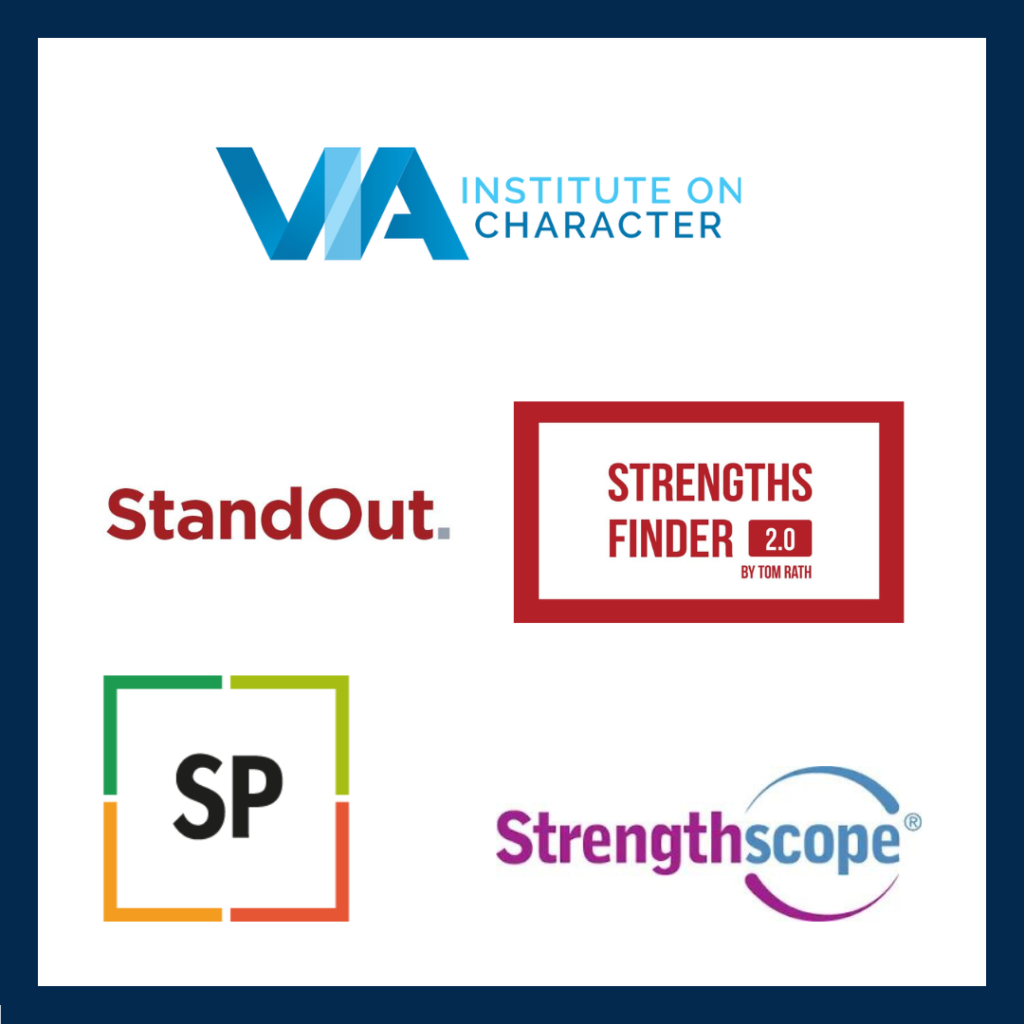In this blog we discuss our recommendations for the best Strengths assessment tools for understanding your strengths in general, whether you are leading others or not. There are several excellent tools on the market, which we know from our own experience provide enormous individual and organisational value.
Why you need to focus on your strengths
The evidence is clear: a leader can’t be good at everything. If you’re a leader striving to ‘excel in all areas’, then chances are you’re not getting the best from yourself, or your team. The huge focus on development areas, and turning weaknesses into strengths largely misses this important point. There is real power in deeply understanding and appreciating your unique combination of strengths as a leader; and then enhancing them.
Strengths-based approach at the heart of positive psychology
The science of strengths has come a long way since Dr Martin Seligman kick started interest in positive psychology two decades ago, now with a compelling base of research and evidence to back it up. Fundamentally, it’s about making the most of what you’ve got, not making up for what you haven’t. Rather than focusing on weaknesses or correcting what’s ‘wrong’ (the deficit model), nurture the things you are energised and interested in (things that are easier to excel at). Humans naturally want to discover, grow and develop their potential, so strengths-based leadership focuses on the positive qualities that can be harnessed.
What this means for leadership today is: focus on your existing strengths and make those better, whilst understanding your people’s needs, investing in their strengths, and creating the best teams with the right people and mix of skills.
“Strengths are not simply what you are good at, they are what you are energised by.”
By doing ‘what you do best everyday’ not only do you perform to your best, you are the best team mate, manager and leader you can be.
Assessment Tools: Strengths Tools vs. Personality Type Tools
There are hundreds of personality and strengths based assessment tools available on the market today – you only need to do a quick google search, and it returns over 98 million results! So it’s not surprising that the use of workplace assessment tools is growing. Indeed, 70% of employers with 50 or more staff members are using these tools .
Navigating this vast expanse of information can be daunting for any individual, HR manager or leader. We believe that strengths-based tools are ideal for leadership development and talent management for both existing and potential leaders.
The unique nature of all strengths-based tools is that they all focus on helping you as an individual to identify the specific combination of preferences or behaviours that you possess – and aim to make those better. In contrast, popular psychometrics like MBTI and DISC, cluster behavioural preferences into broad types or styles, giving labels to each one like ‘ISTJ’ (the most common MBTI type) or ‘Dominant’ (one of four DISC types). It’s not necessarily wrong to take this approach, but our understanding of psychology has come an awful long way since the original theories of Jung (which underpins MBTI) and William Moulton Marsden (DISC) around 100 years ago!
The main drawback of psychometric type assessment tools is that they don’t fully recognise two key things:
- The unique depth and breadth of our Individual characteristics
- The critical role context plays in determining our behaviour
Often, the results of these types of assessments fit you into a ‘box’ or label you with a type that bundles together a number of distinct characteristics or behaviours. Organisations can become too reliant on these tools and mis label complex individuals into neat types that pigeon hole people. They risk reinforcing unconscious bias.
So what are the alternatives and how can strengths-based leadership assessment tools offer deeper insights into context and characteristics?
Introductory Strengths Tools
These tools are focused exclusively on identifying individual strengths. They have an inventory of strengths and a short survey for you to complete to help you identify them.
Tool 1: VIA Character Strengths
The VIA is one of the most thoroughly researched assessments in existence, and has been used by more than 30 million people worldwide. One of the many great things about it is the research was truly global, ensuring that each of the 24 strengths are universally recognised across cultures around the world.
It measures core characteristics and virtues, so it has less focus on behaviours than the Gallup tool. VIA has 24 character strengths across six categories including Humanity and Courage. It is interesting to note that Leadership is one of the 24 strengths, so the definition of leadership is quite narrow. There are other strengths tools that focus more on leadership impact.

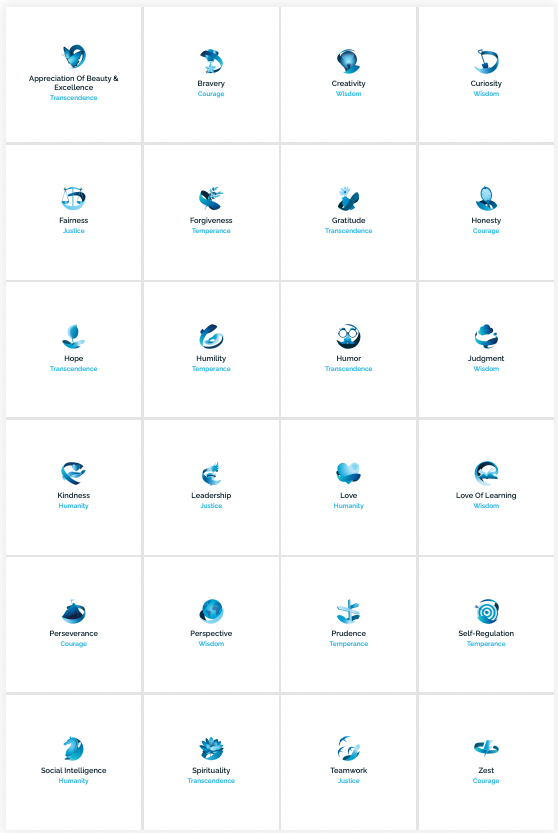
Tool 2: Clifton Strengths Finder 2.0
This very popular tool is packaged up with a book, drawing on extensive research by Gallup. It explains each of the 34 strengths including WOO (winning others over). The book is a short, easy read. The assessment measures your strengths based on how you think, feel and behave. The results report gives you insights into strengths that are less or more dominant.
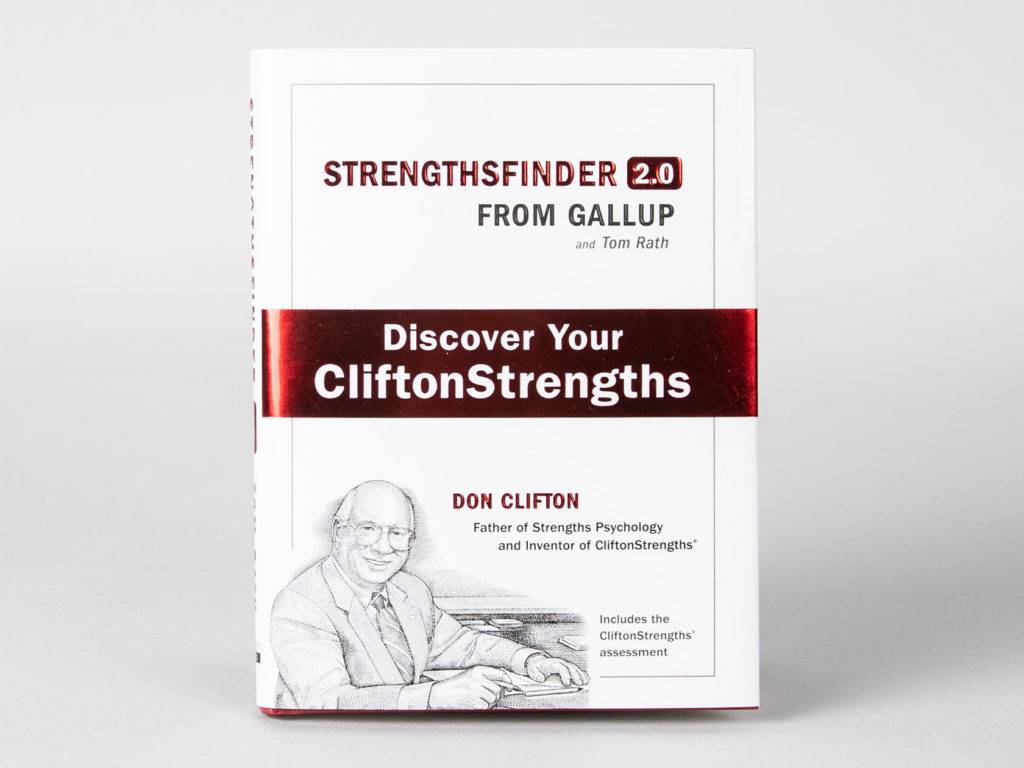
Clifton Strengths have recently launched a new report aimed specifically at leaders. The 23 page report provides insights and action items for your top 10 strengths across four domains: Executing, Influencing, Relationship Building and Strategic Thinking.
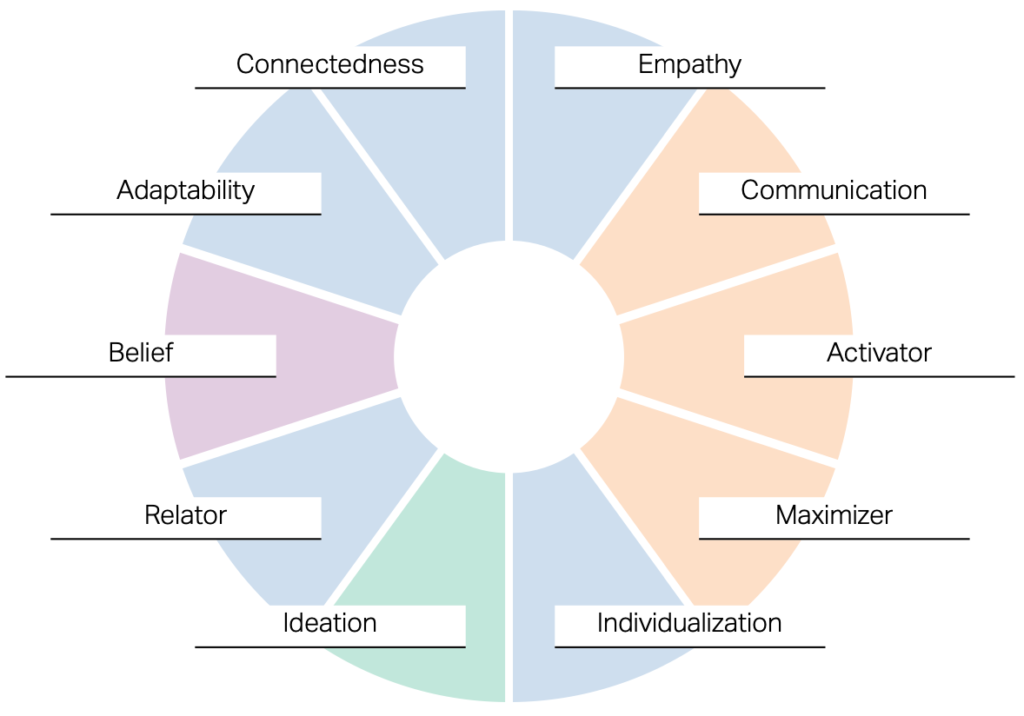
What introductory tools are ideal for:
- Gaining valuable insight into the characteristics that energise you most
- Getting hold of an accessible report which can be easily interpreted and shared with others
- Reflecting on your career options or next move (especially if you are feeling worn out or unsatisfied with your current job)
What they are not ideal for :
- Understanding weaknesses. Neither of them give any insight into weaknesses, which you very much need to pay attention to as a leader. I often talk to people about strengths and they incorrectly assume that by playing to their strengths, weaknesses are largely irrelevant. Unfortunately not. Research by Zenger and Folkman clearly shows that playing to your strengths is only an effective strategy once critical weaknesses have been addressed.
- Recognising overplayed strengths. Once you have got an understanding of your strengths and really start to value them, you want to use them all the time. The problem is, strengths can be overplayed (especially when we are under pressure). Being confident, for example, can be a great strength, but when overplayed can become arrogance. A ‘derailer’ is a blind spot that derails our performance or a successful career. Striving to maximise your strengths increases the risk of inadvertently overplaying them.
The tools in the next two categories all have a more holistic approach to strengths, which means that they can help you identify both strengths and weaknesses. This is crucial for effective collaboration and building a team where each person can play to their strengths.
How To Become A Better Leader By Using Your Strengths
Using your strengths as a leader is one of the best ways to bring out the best in others: and bring out the best in yourself. Yet in can be difficult to know where to start and what steps to take to apply your leadership strengths.
Our blog article How To Become A Better Leader By Using Your Strengths sets out six key steps to becoming a strengths based leader.
Click here to read more.
Role-based Strengths Tools
Role-specific tools are built around a model of role archetypes, unlike all the other tools included in this article. There is really just one specific tool in this category!
Tool 3: Standout Assessment Marcus Buckingham
The Standout Assessment has been created by Marcus Buckingham, well known as a subject matter expert on strengths. It is built around 9 roles, including Connector, Influencer and Teacher. The 16 page report provides an assessment of how well you match up to the 9 roles, in rank order. It provides explanation of the primary and secondary roles that match best to your talents and skills, as well basic tips on how to make the best of them in different situations, including as a leader.

What role-specific strengths tools are ideal for:
- Getting insight into the role(s) you are best suited to play in any team
- Exploring how to get the best from others in a group or team
- Preparing for a career move or a new role
What they are not ideal for :
- Understanding detailed personal attributes not closely associated with the pre-defined roles
Advanced Strengths Assessment Tools
These final two tools provide more comprehensive insights into strengths, with much more emphasis on dealing with weaknesses and the risks of over playing strengths than the other tools. This makes them much more useful. They are powerful tools in 1:1 performance coaching, team effectiveness work, and leadership or career development.
Tool 4: Strengths Profile
Insightful strengths tool that examines strength usage. It gives a powerful SWOT analysis which identifies realised and unrealised strengths, learned behaviours and weaknesses from 60 unique strengths. A key feature of Strengths Profile is the way it differentiates between strengths that you are using and those you are not. This makes it really easy to know how to play to your strengths more. There is a free ‘Starter Profile’ version of the report, which details key strengths, learned behaviours and top weakness.
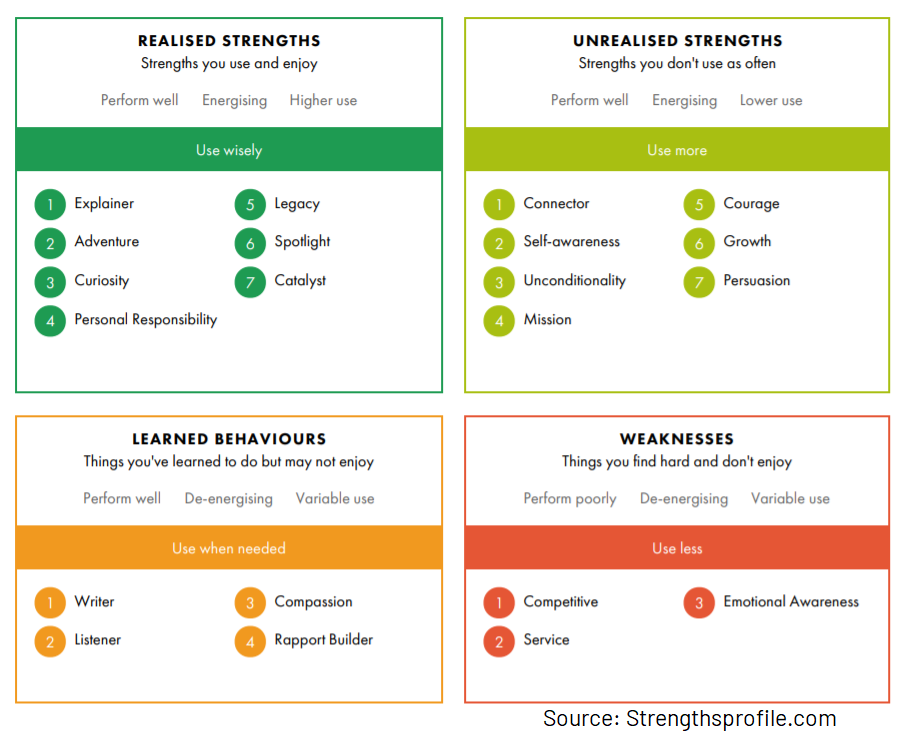
Cappfinity, who publish the Strengths Profile, have recently launched a new Leader Report. It is a powerful development report built specifically for leaders. A key feature is depth of advice and insights about your strengths, in context. As the example below shows, each Realised Strength is described in terms of leading self, leading others, leading the organisation and blind spots.

One of my favourite sections is about Learned Behaviours. Learned Behaviours (LB) are things that you are good at using, but which drain you. The carefully crafted content is really useful for considering the impact each LB may have, and how to calibrate its use to avoid burnout.
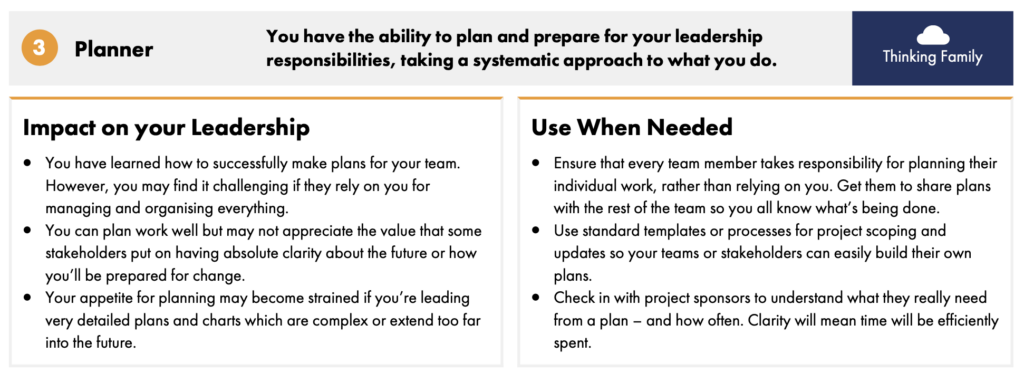
Tool 5: Strengths Scope
A suite of strengths reports built around 24 strengths across four categories: Emotional, Relational, Thinking and Execution. The report provides a handy snapshot into your ‘Significant 7’ strengths and advice about how to manage the risk of over playing your strengths.
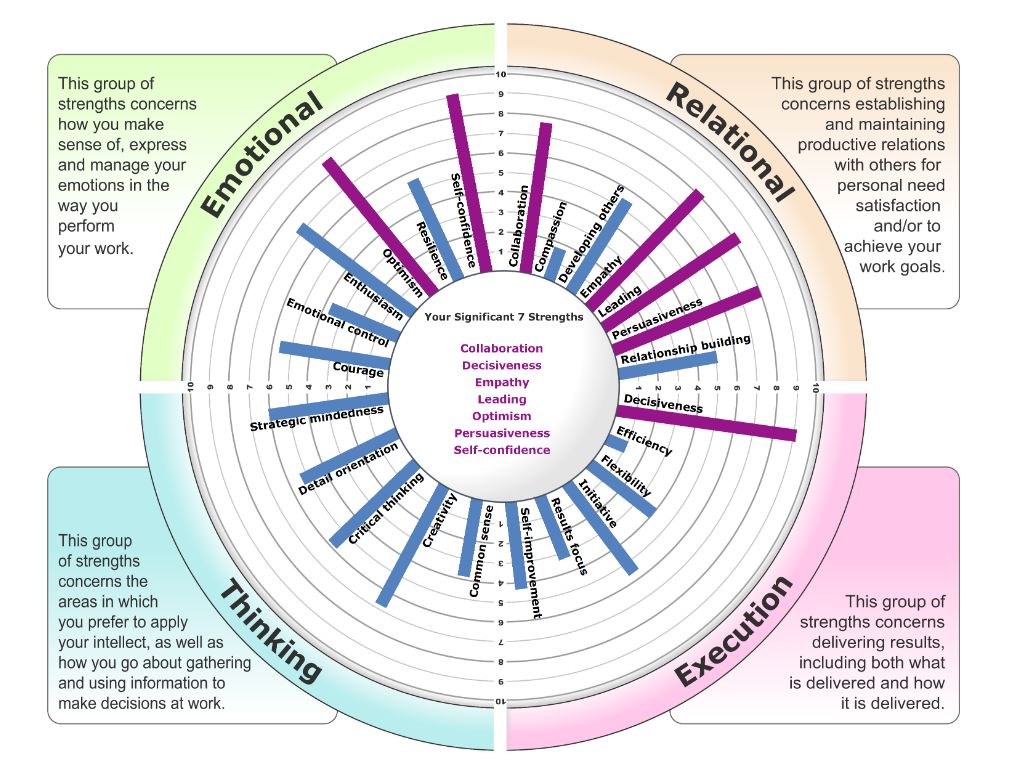
What Advanced Strengths Tools are ideal for:
- Giving a well rounded view of individual strengths, along with weaknesses or potential blind spots that may need addressing
- Providing in depth personal insight – they are most useful when explained or ‘debriefed’ by a trained/accredited practitioner. They are a rich resource to fuel ongoing development and personal growth.
- Understanding the strengths, weaknesses, risks and opportunities as a team. This is a great way to establish a team, review effectiveness and plan ahead with colleagues. A big advantage it that both of these tools have a specific Team Report available which collates and summarises individual reports.
What they are not ideal for:
- Getting a simple list of character or role based strengths
Conclusion
Select the strengths assessment tool according to your own specific needs. Each has its own merits . As all of them are self-assessments, they rely on your own perceptions and interpretation. Some of them are available free, including the Standout Strengths and Strengths Profile. There is every reason to try them out for yourself today(!).
Whichever report you end up using, we would always recommend discussing the findings with a trusted colleague or manager. Ideally, get your manager or colleague to complete their own report to get the more from your discussion. A debrief with a qualified practitioner will help you make the most of your report, and turn insights into action.
